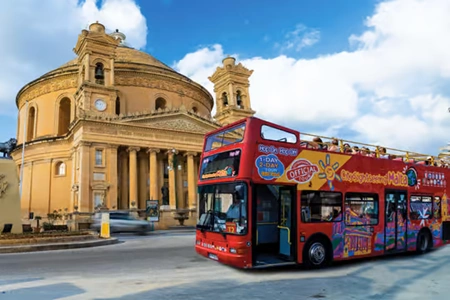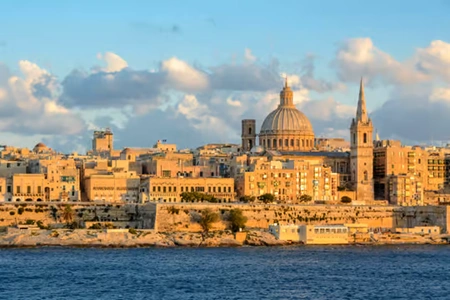Our Lady of Pompeii
Since 1436, Marsaxlokk has been part of the parish of Żejtun. Chapels were built for the residents in 1650.
When the Ottoman and Pirates were practically no longer a danger to the Maltese population, the families moved to their fields close to the sea and built farms and fishermen moved closer to the harbour.
In 1890, Archbishop Pace ordered the construction of a new church dedicated to Our Lady of Pompei. The foundation stone was laid on December 7th, 1890. The architect was Father Joseph Diacono of Gozo. The construction took two years. It was a rectangular design.
The noble family Zammit Gauci from Żebbuġ donated the land on which the church stands.
The villagers offered the Archbishop a petition to make the church into a parish church. The wish of the residents was granted in January 1897. The first parish pastor was Dun Salv Delia.
In 1910, under the direction of Father Busuttil, the altar and church naves (area from the middle to the main entrance) were enlarged.
Around 1920, under the direction of Pastor Salv Gatt, the façade and the central aisle were changed, to a design by architect Guze'Bellia. Marquise Rosa Apap Testaferrata donated half of the money needed for the construction of the central aisle (area between the middle columns). But also the inhabitants of that time committed themselves to the realization of the changes.
Pastor Salv Gatt also built the dome later. Large bells were placed which came from the St. Dominic Church in Valletta. An organ was also ordered in Germany, which produced its first sounds in 1954
The model of the church has now, after the renovations, the shape of a cross with a length of 36 meters and at its widest 26.5 meters. The church has a dome and two towers.
The church possesses various art objects, including:
The altar piece which was painted by the Marquis of Peppinu Testaferrata.
Various paintings, on which depicted:
The Saint Vincent Church painted by the Maltese artist Ġużeppi Cali; St. Andre painted in 1893 by Ġużthe eppi Bonnici; St. Joseph painted by Joseph Bonnici; the upper ship painted by Joseph Caruana; St Therese painted by G. Mifsud in 1933; martyrdom of St. Catherine painted by Lazzaro Pisani; St. Margareth painted by Ramiro Cali in 1934; The transformation of our Lord painted by Raphel Bonnici Cali.
Statues:
The statue of Our Dear Lady of Pompei came from Lecce in Italy at the time of pastor Salv Delia. The statue of St. Rita was transferred from Bologna in Italy. The statues of St. Joseph and St. Andrew were both made by the Gozotan Austin Camilleri.
Holy Mass | Mondays to Saturday 7:45 - 18:00 Sunday 7:30 - 9:30 - 11:00 - 18:00 |





